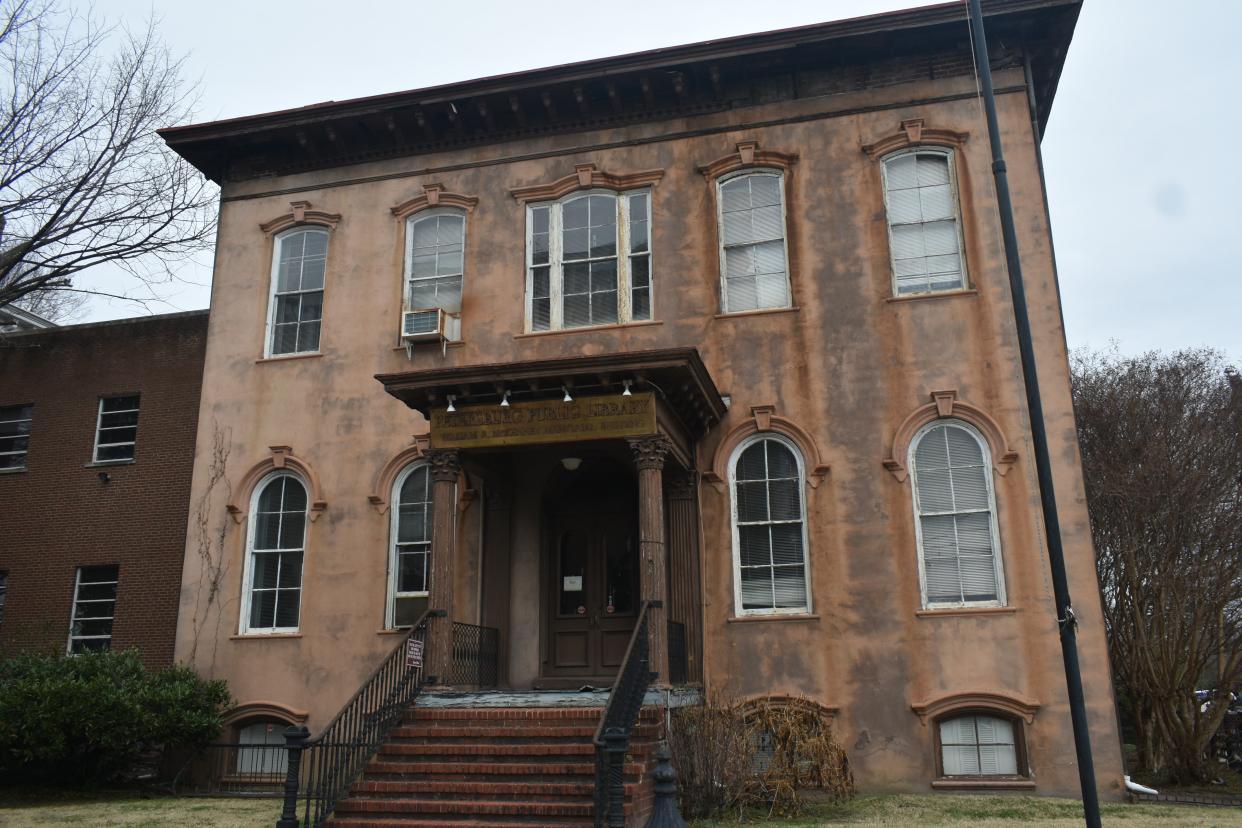Petersburg: William R. McKenney Memorial Building added to Virginia Landmarks Register

- Oops!Something went wrong.Please try again later.
PETERSBURG — Last week, 10 historic sites were added to the Virginia Landmarks Register. A historic building in Petersburg made the list.
The recently listed places include a former public library that was the site of a 1960 sit-in led by the Reverend Wyatt Tee Walker, a renowned leader of the Civil Rights Movement, a cemetery for some of the earliest German immigrant settlers in Virginia, and one of American railroad history’s most striking steam locomotives that transported passengers in the 1950s.
The other new listings are in the cities of Alexandria, Roanoke, Salem and Virginia Beach and in the counties of Albemarle, Appomattox, Augusta and Montgomery as well as in the town of Pennington Gap.
The Commonwealth’s Board of Historic Resources approved the Virginia Landmarks Register [VLR] listings during its quarterly public meeting on December 14 in Richmond. The VLR is the commonwealth’s official list of places of historic, architectural, archaeological and cultural significance.
Virginia Landmarks Register: 10 historic sites added
Eastern Region
The William R. McKenney Memorial Building in Petersburg is a prominent two-story Italianate house constructed in 1859 as a family residence for the city’s first mayor, John Dodson. Converted to a public library in 1924, the building became the site of an important sit-in led by the Reverend Wyatt Tee Walker in 1960, which ultimately led to the library’s integration and helped spur full integration throughout the city.
The Scottsville Tire Cord Plant Historic District in Albemarle County features as its raison d'être the Scottsville Tire Cord Plant, which was built by the United States Defense Plant Corporation in 1944 to increase the production of rubber to meet wartime needs during World War II. Once one of the largest employers in Scottsville, Albemarle County, and in surrounding counties, the plant remained in use throughout the 20th century as the increasing reliance on automobiles strengthened the need for rubber tires and the tire cord.
The Seatack Historic District is a historic African American neighborhood in Virginia Beach that originated before the Civil War from a community of free and enslaved people.
Northern Region
The Bank of Potomac/Executive Office and Governor’s Residence of the Restored Government in Alexandria was first completed ca. 1807 as the Bank of Potomac, one of the earliest banks established in the U.S. In 1863, the property became the office and personal home of the Governor of the Restored Government of Virginia, Francis H. Pierpont, who worked with President Lincoln’s administration to carry out a strategy that would restore to the nation areas of the country that had attempted to secede before the start of the Civil War.
Dutch Hollow Hanger Cemetery in Augusta County contains the graves of some of the first German immigrant settlers to inhabit the community known as Dutch Hollow and the surrounding area in the early to mid-1700s.
Western Region
Built ca. 1930 using contributions from the Julius Rosenwald Fund, the Carver-Price School in the town of Appomattox provided free education for local African American students throughout the segregation era and the Civil Rights Movement in Virginia.
The Hart Motor Company in Salem reflects the 20th-century trend of automobiles becoming the main mode of transportation for the public. Comprised of a showroom and a service department station, it exemplifies the type of roadside architecture built to cater to drivers as opposed to pedestrians in a traditional centralized business district.
The Norfolk & Western Class J No. 611 Locomotive in Roanoke was completed in May 1950 to transport passengers traveling from Virginia to Ohio, and from the western parts of the commonwealth to West Virginia. In 1952, it was one of the locomotives that pulled Dwight D. Eisenhower’s presidential campaign train from Columbus, Ohio, to Kenova, West Virginia.
The Pennington Gap Commercial Historic District embodies the socioeconomic character of a small working-class town in rural Appalachia. Encompassing the commercial core of the town of Pennington Gap in Lee County, the district provided the local population as well as residents in surrounding rural areas access to rich natural resources in the region, particularly coal and timber in the northern section of the county.
The only surviving public school from the early 20th century in Montgomery County, the Pilot School provided free education to local white students starting in 1921 as part of Virginia’s public education system. In the years following the last class in 1962, the unincorporated community of Pilot acquired the building for use as a gathering place for family activities and social functions.
The Virginia Department of Historic Resources will forward the documentation for these newly listed VLR sites to the National Park Service for nomination to the National Register of Historic Places. Visit dhr.virginia.gov to view a complete list of historic places in Virginia.
$218,182 to 21 nonprofit organizations Virginia Humanities grants, Petersburg $20K Chesterfield $5K: Here's what we know...
'It's a momentous achievement' Petersburg: Walnut Hill Historic District added to National Register of Historic Places
Kristi K. Higgins aka The Social Butterfly, an award-winning columnist, is the trending topics and food Q&A reporter at The Progress-Index voted the 2022 Tri-Cities Best of the Best Social Media Personality. Have a news tip on local trends or businesses? Contact Kristi (she, her) at khiggins@progress-index.com, follow @KHiggins_PI on X and @socialbutterflykristi on Instagram.
Your support is vital to local journalism. Please subscribe.
This article originally appeared on The Progress-Index: Virginia Landmarks Register: 10 historic sites added to list

